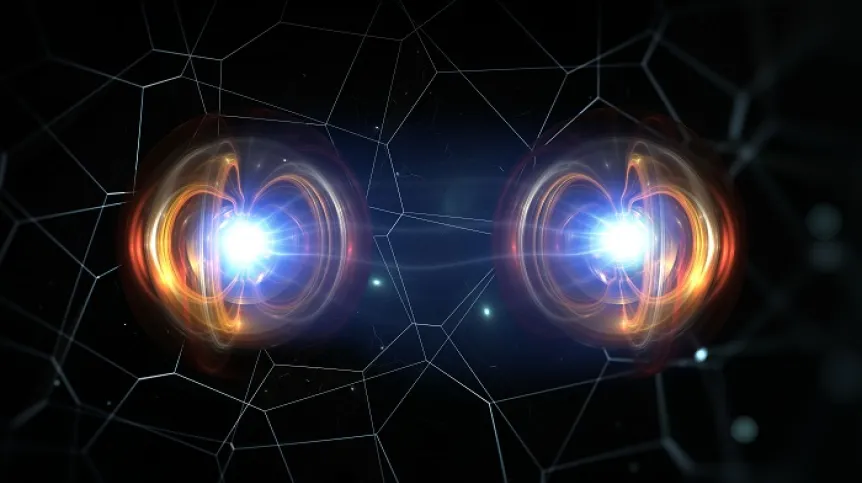
Researchers are wondering whether knowledge in the field of quantum mechanics will allow them to convert information into mechanical work more effectively or in a completely new way. Polish physicist presents mathematical tools that will bring this branch of physics (quantum thermodynamics) closer to experimental stage.
The publication by Dr. Kamila Korzekwa from the Jagiellonian University and Dr. Matteo Lostaglio on this subject received two distinctions from the editorial board of Physical Review Letters, one of the world's most prestigious physics journals.
Dr. Korzekwa is trying to better understand how the second law of thermodynamics works at the quantum level.
He said: “No process is possible whose sole result is the absorption of heat from a reservoir and the conversion of this heat into work.”
A feature of our Universe is that entropy, which can be understood as a measure of disorder, always increases with time. Therefore, it is not possible to increase 'order' in a system (or more precisely, reduce its entropy) without using energy (because this also increases entropy elsewhere).
Dr. Korzekwa told PAP: “For me, questions about the second law of thermodynamics are questions about a fundamental aspect of the Universe. This law is related to the fact that everything will break down, we will all die, everything follows the arrow of time towards destruction. The question of why this is the case - also at the level of the laws of quantum physics.”
The study of quantum thermodynamics also has a more practical dimension. In order to build more efficient machines and to push devices closer to the limits of physics, we must better understand its laws.
Meanwhile, there are many indications that this is impossible without including considerations regarding the physics of information, i.e. the physical limitations of its processing, in the theoretical models.
Korzekwa said: “We live in the age of information. And information is not abstract. It is subject to the laws of physics, also at the level of quantum mechanics. And memory-related effects can significantly affect thermodynamic processes.”
Mentioning ‘Maxwell's demon’, he said: “This 'finite being' proposed in a thought experiment would be able to segregate molecules in two adjacent containers.
“By opening and closing the partition at the right time, it would be able to collect fast, hot molecules in one part, and slow, cold molecules in the other. Thanks to this trick, it would build a heat engine 'for free'.
“But what makes a demon unbuildable? The problem is precisely the information that the demon acquires: it needs to know whether the molecule approaching it from a given direction is fast or slow in order to move the partition at the right moment. The information that the demon must acquire and then remove is a hidden cost. And these costs mean that the work of the demon is not as free as it might seem.
“Therefore, Maxwell's demon cannot exist. However, it would be worthwhile developing other machines that use quantum tricks, which would allow, for example, to obtain as much work as possible from the smallest amount of information. But we are far from it for now, because first we must have a description of how the second law of thermodynamics works in the world of quantum systems.”
Korzekwa continued: “Quantum thermodynamics is a field in which several hundred papers are created annually. Scientists try to explain thermodynamics at the quantum level, understand its mechanisms and determine whether it is possible to design heat engines and other devices with greater efficiency or power than is possible classically. However, I have the impression that at some point this community started banging its head against the wall. After 10 years from the creation of this field, significant experiments should appear. After all, we are physicists, not mathematicians.
“Our work goes a step further towards experimentation: it provides tools to help model experiments in quantum thermodynamics, because we provide a mathematical formalism that is tailored to the experiment. It is like providing a set of paints, or a hammer and chisel”
This formalism allows scientists to describe how, by interacting with a heat bath at a given temperature, quantum particles can pass from one state of thermodynamic disequilibrium to another. Wit it, it is possible to analyse (with certain simplifications) what are all possible future states of a certain system after it enters an environment that has a given temperature.
A macroscopic equivalent of this experiment would be, for example, placing an ice cube in a room at 20 degrees C. Physicists would like to know all possible future states of this system (for example, dissolved water at 10 degrees C). And, as a result, find the future in which the system will do the most work.
The scientist added: “I want to find out how much we can do +thermodynamically for free+, without adding energy.”
In his opinion, experiments that can be designed using this formalism could in the longer term concern heat engines that use work performed by single molecules (the Szilard engine concept).
Korzekwa said: “It's fascinating to understand why time flows one way. After all, we remember the past, not the future. People began to understand this in the 19th century, when the phenomenon of entropy was described. But since quantum mechanics appeared, we have known that fundamentally it is not that's a sufficient explanation. Particles are not billiard balls, but quantum probability waves. Will we be able to better understand the directionality of time if we add the formalism of quantum mechanics to what we already know?”
PAP - Science in Poland, Ludwika Tomala
lt/ bar/ kap/
tr. RL













